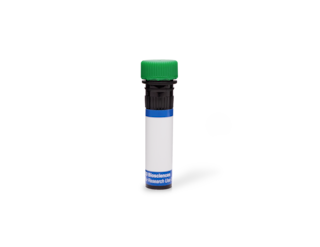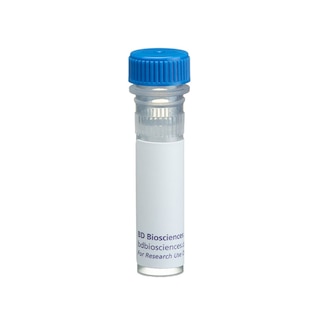-
Your selected location is
Middle East / Africa
- Change location/language
-
Reagents
- Flow Cytometry Reagents
-
Western Blotting and Molecular Reagents
- Immunoassay Reagents
-
Single-Cell Multiomics Reagents
- BD® OMICS-Guard Sample Preservation Buffer
- BD® AbSeq Assay
- BD® Single-Cell Multiplexing Kit
- BD Rhapsody™ ATAC-Seq Assays
- BD Rhapsody™ Whole Transcriptome Analysis (WTA) Amplification Kit
- BD Rhapsody™ TCR/BCR Next Multiomic Assays
- BD Rhapsody™ Targeted mRNA Kits
- BD Rhapsody™ Accessory Kits
- BD® OMICS-One Protein Panels
-
Functional Assays
-
Microscopy and Imaging Reagents
-
Cell Preparation and Separation Reagents
-
- BD® OMICS-Guard Sample Preservation Buffer
- BD® AbSeq Assay
- BD® Single-Cell Multiplexing Kit
- BD Rhapsody™ ATAC-Seq Assays
- BD Rhapsody™ Whole Transcriptome Analysis (WTA) Amplification Kit
- BD Rhapsody™ TCR/BCR Next Multiomic Assays
- BD Rhapsody™ Targeted mRNA Kits
- BD Rhapsody™ Accessory Kits
- BD® OMICS-One Protein Panels
- Middle East / Africa (English)
-
Change location/language
Old Browser
This page has been recently translated and is available in French now.
Looks like you're visiting us from {countryName}.
Would you like to stay on the current location site or be switched to your location?
BD Transduction Laboratories™ Purified Mouse Anti-Rap2
Clone 12/Rap2 (RUO)





Western blot analysis of Rap2 on a A431 cell lysate. Lane 1: 1:2500, lane 2: 1:5000, lane 3: 1:10000 dilution of the anti- Rap2 antibody.

Immunofluorescence staining of mouse macrophages.




Regulatory Status Legend
Any use of products other than the permitted use without the express written authorization of Becton, Dickinson and Company is strictly prohibited.
Preparation And Storage
Product Notices
- Since applications vary, each investigator should titrate the reagent to obtain optimal results.
- Please refer to www.bdbiosciences.com/us/s/resources for technical protocols.
- Caution: Sodium azide yields highly toxic hydrazoic acid under acidic conditions. Dilute azide compounds in running water before discarding to avoid accumulation of potentially explosive deposits in plumbing.
- Source of all serum proteins is from USDA inspected abattoirs located in the United States.
Companion Products


Rap2 is a member of the Ras superfamily of low molecular weight GTP/GDP binding proteins. The Rap proteins are 50% homologous in sequence to p21ras. Like Ras, the Rap proteins cycle between a GDP-bound inactive form and a GTP-bound active form. Conversion between these two forms is regulated by Rap-GTPase activating protein (Rap-GAP) and a Rap-GDP dissociation stimulator (GDS). Since Ras and Rap have the same amino acid sequence in their putative effector domain (aa. 32-40), it seems likely that they perform either similar or antagonistic functions. Rap2 proteins are about 60% identical to Rap1 proteins and Rap2A and Rap2B show 90% amino acid identity, differing mainly at the carboxy-terminus. Unlike Rap1, the Rap2 proteins cannot compete with Ras for interaction with Ras-GAP, nor are they substrates for PKA. It follows that the intrinsic GTPase activity of Rap2A is not stimulated by Ras-GAP; however a distinct activator (Rap-GAP) has been identified. Both Rap2 proteins show posttranslational modifications: Rap2B is geranylgeranylated and Rap2A is the first non-Ras member of the Ras superfamily observed to be farnesylated.
This antibody is routinely tested by western blot analysis. Other applications were tested at BD Biosciences Pharmingen during antibody development only or reported in the literature.
Development References (5)
-
Janoueix-Lerosey I, Polakis P, Tavitian A, de Gunzburg J. Regulation of the GTPase activity of the ras-related rap2 protein. Biochem Biophys Res Commun. 1992; 189(1):455-464. (Biology). View Reference
-
Ohba Y, Mochizuki N, Matsuo K, et al. Rap2 as a slowly responding molecular switch in the Rap1 signaling cascade. Mol Cell Biol. 2000; 20(16):6074-6083. (Biology: Immunofluorescence, Western blot). View Reference
-
Ohmstede CA, Farrell FX, Reep BR, Clemetson KJ, Lapetina EG. RAP2B: a RAS-related GTP-binding protein from platelets. Proc Natl Acad Sci U S A. 1990; 87(17):6527-6531. (Biology). View Reference
-
Pizon V, Chardin P, Lerosey I, Olofsson B, Tavitian A. Human cDNAs rap1 and rap2 homologous to the Drosophila gene Dras3 encode proteins closely related to ras in the 'effector' region. Oncogene. 1988; 3(2):201-204. (Biology). View Reference
-
Reedquist KA, Bos JL. Costimulation through CD28 suppresses T cell receptor-dependent activation of the Ras-like small GTPase Rap1 in human T lymphocytes. J Biol Chem. 1998; 273(9):4944-4949. (Biology: Western blot). View Reference
Please refer to Support Documents for Quality Certificates
Global - Refer to manufacturer's instructions for use and related User Manuals and Technical data sheets before using this products as described
Comparisons, where applicable, are made against older BD Technology, manual methods or are general performance claims. Comparisons are not made against non-BD technologies, unless otherwise noted.
For Research Use Only. Not for use in diagnostic or therapeutic procedures.